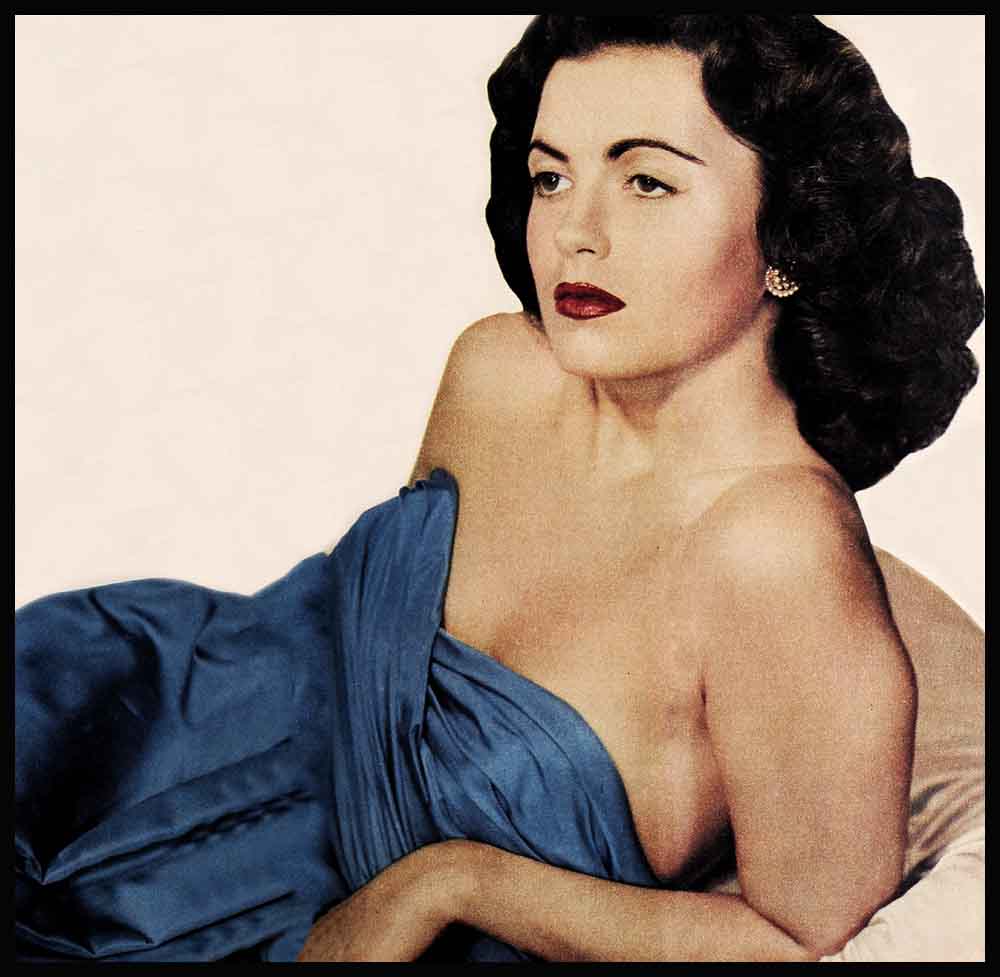
Faith—and five million dollars
This is a story of faith.
Twenty-five years ago while a twenty-year-old young Texan was taking over the management of the Hughes Tool Company and oil interests which he had just inherited, an infant girl was born in the colorful French Quarter of New Orleans. Ten years ago the paths of this man and this girl crossed in Hollywood—and, promptly, they began to live a Cinderella story that has taken ten years to complete.
The man is Howard Hughes, whose brilliance as a builder of airplanes, speed records, oil tools and motion picture stars has made him an almost legendary figure. The name of the unknown girl he “Godfather-ed” to stardom is, fittingly enough, Faith Domergue. For, above all, this is a story of faith—the faith Hughes had to have in this girl to gamble $5,000,000 in her salary, tutoring and coaching; in “Vendetta,” the picture that is built completely around her and in “Where Danger Lives,” the picture in which she appears with Bob Mitchum.
Today Faith is a poised, exotic-looking girl with black curly hair and slumberous hazel eyes, a sexy, almost rebellious-looking mouth, a skin like champagne satin and a voice alluring and low. When Howard Hughes first met her she was a chubby fifteen. She had had no coaching dramatic-wise. She was bedevilled by an inferiority complex. And she had a terrible speech impediment. But he said to her, “If you will have confidence in me—someday you will be one of the biggest stars in Hollywood.”
She believed him. She worked; studying, exercising—with a depresser under her tongue and a toothpick across her teeth—reading for hours at a time. And the years went by.
Mr. Hughes is a man who inspires confidence. Thus simply Faith explains it all. “He has an indescribable quality—the way he looks at you when he speaks—-so direct—so very sincere. I always believed that, when the time was right, someday it would happen—just as he’d said—”
Their story started on a boat at Balboa, California. Faith, who had been under contract to Warner Brothers for about two weeks, was vacationing at Balboa with her parents. She had been burned in an automobile crash that had threatened her life and the discoloration from the burns was finally fading away.
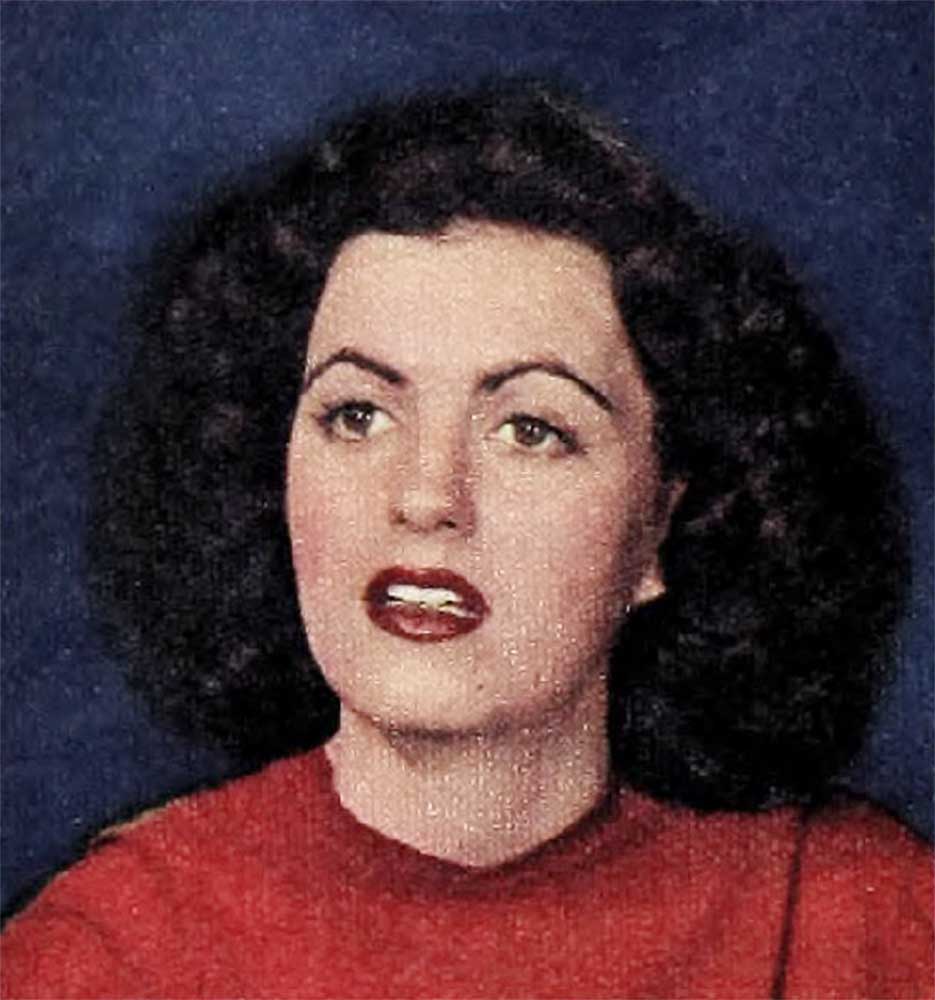
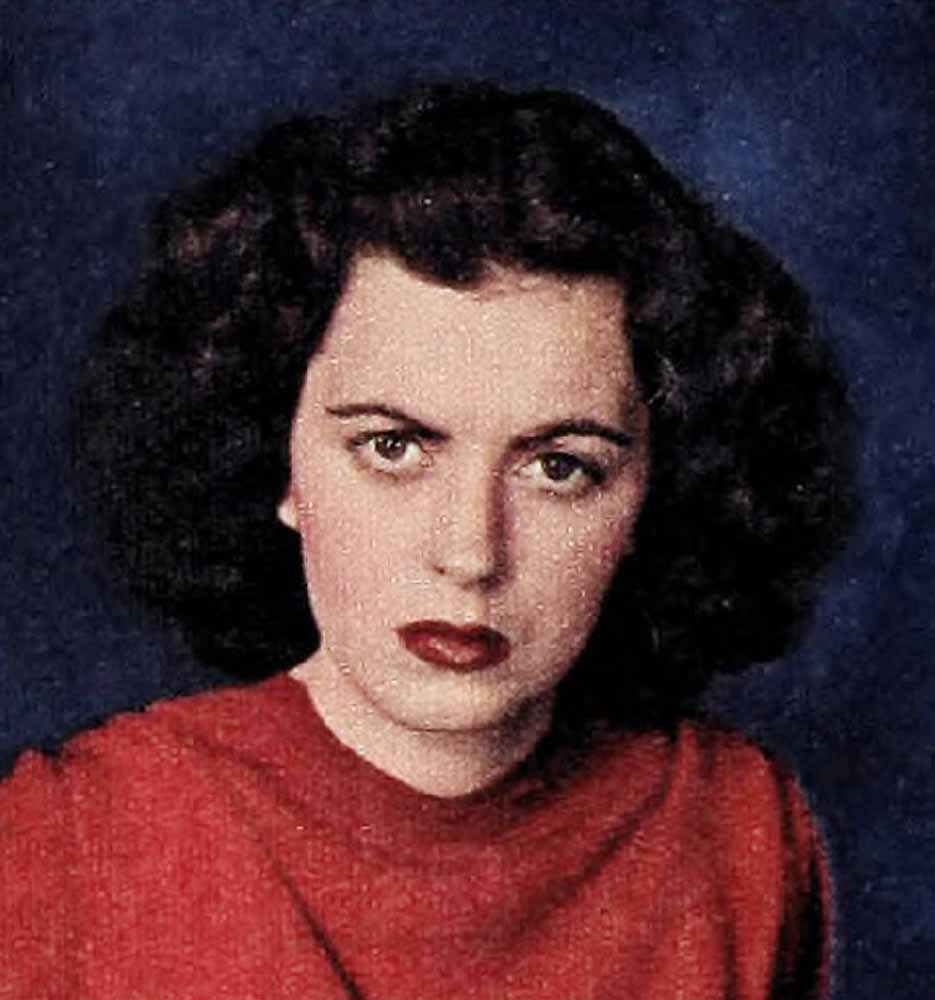
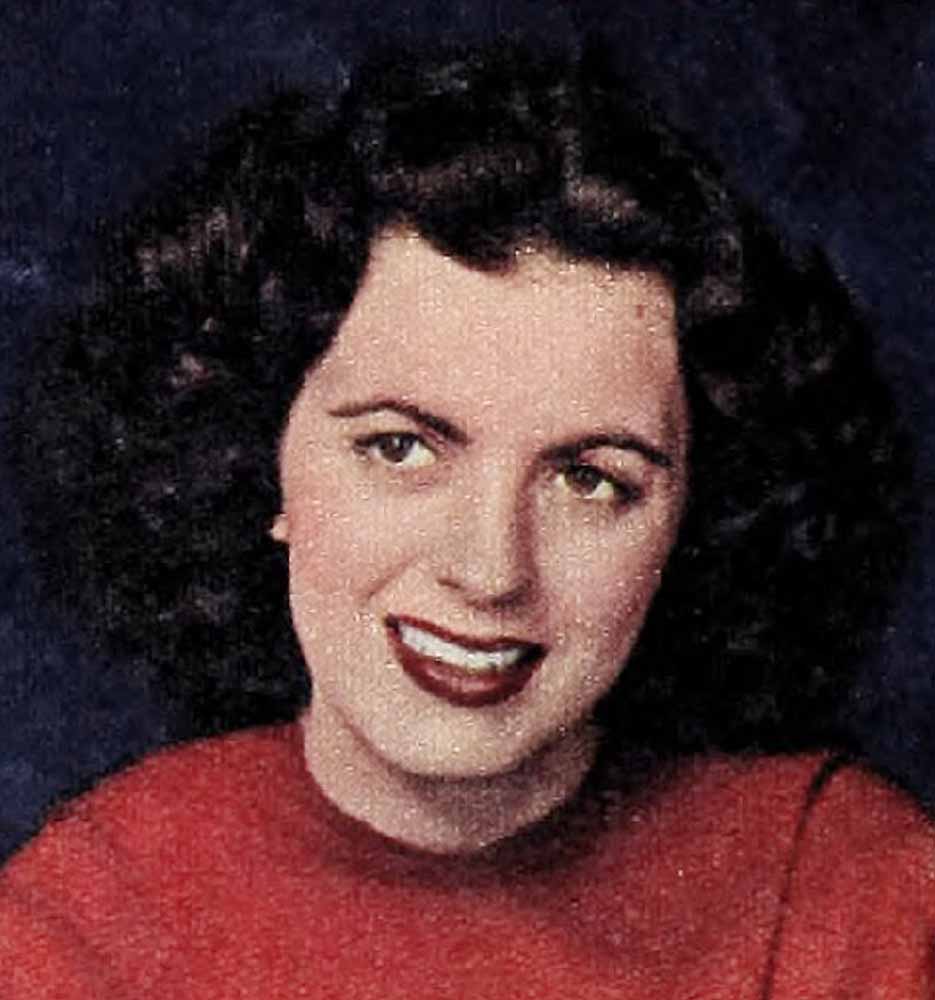
In a drugstore in the village, she had met Susan Peters. Susan told Faith she was visiting there with a large group from Hollywood. They had hired a yacht, “The Zama,” for the day. “Come aboard for lunch?” Susan invited—and Faith, who had never been on a yacht, accepted eagerly. On board she was introduced to a “Mr. Hughes,” a very quiet, thin man with dark eyes. “I thought he was the Captain,” she says now. “He had a Captain’s cap on. And he stayed in the background, didn’t join in the party much. He seemed lonely—so I went over and talked to him.”
Faith knew too well the feeling of loneliness. She could still remember the laughter of her school friends and their mockery of her lisp. She had experienced too, so recently, the feeling of aloneness in the hospital at night when she had wondered whether she would live—or if she would even want to—so she chattered away. She was still wide-eyed about her Warner contract. But mostly she talked about what she fondly believed was “his job,” about the ocean, the weather, navigation and ship lore. “I didn’t know anything about boats—I still don’t,” she says, “but I thought he seemed lonely and I wanted to talk about something that would interest him.”
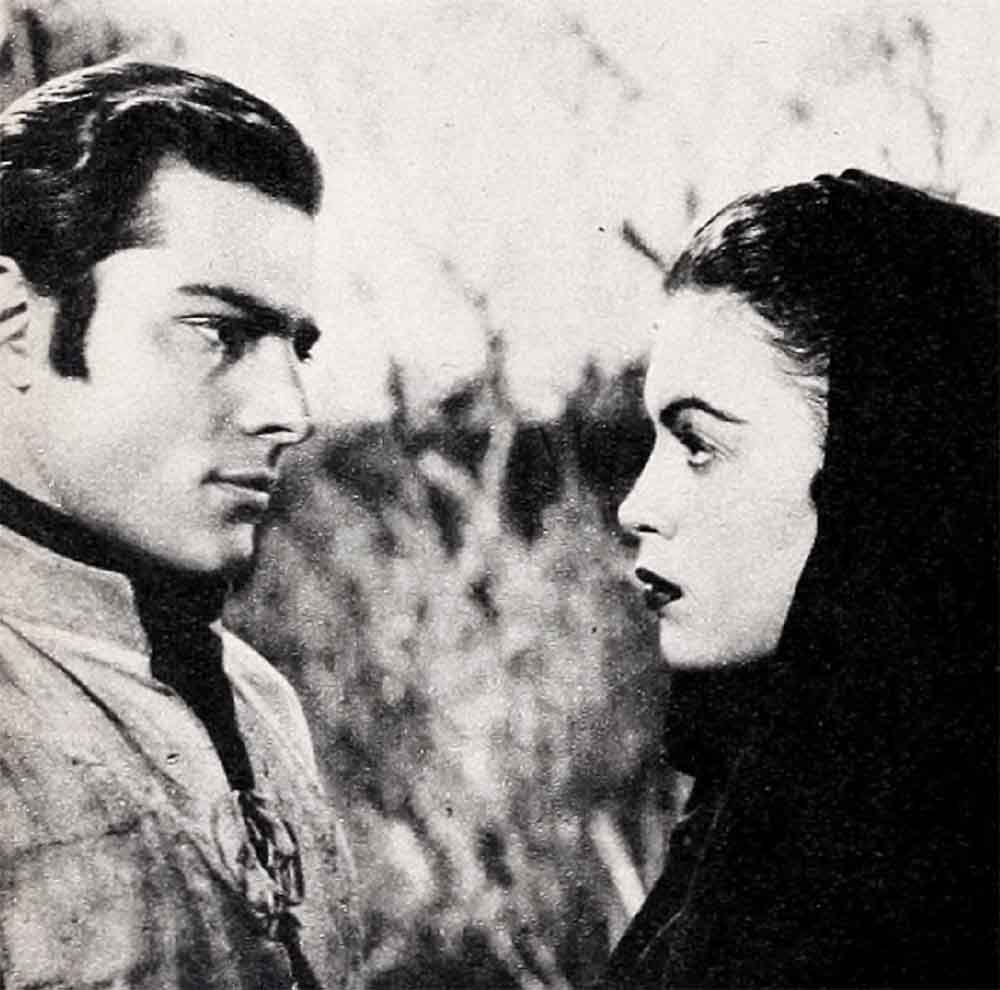
If Hughes was amused by the chubby fifteen-year-old, with the sympathetic eyes, who lisped when she talked—and who talked so much—he didn’t show it. “What a nice man the Captain is,” Faith said to Susan Peters later as she prepared to go ashore. “I’d be willing to sail around the world with a man like that in command.” Susan looked amazed. “Don’t you know whom you’ve been talking to?” she asked. “That was Howard Hughes!”
Faith didn’t know then how prophetic her words were, how she was to embark on a ten-year trip to fame—with Howard Hughes completely in command.
Just why the millionaire industrialist chose to gamble on her—probably nobody will ever know. “I’ve thought about it many times,” Faith says now, “and I’ve wondered—”
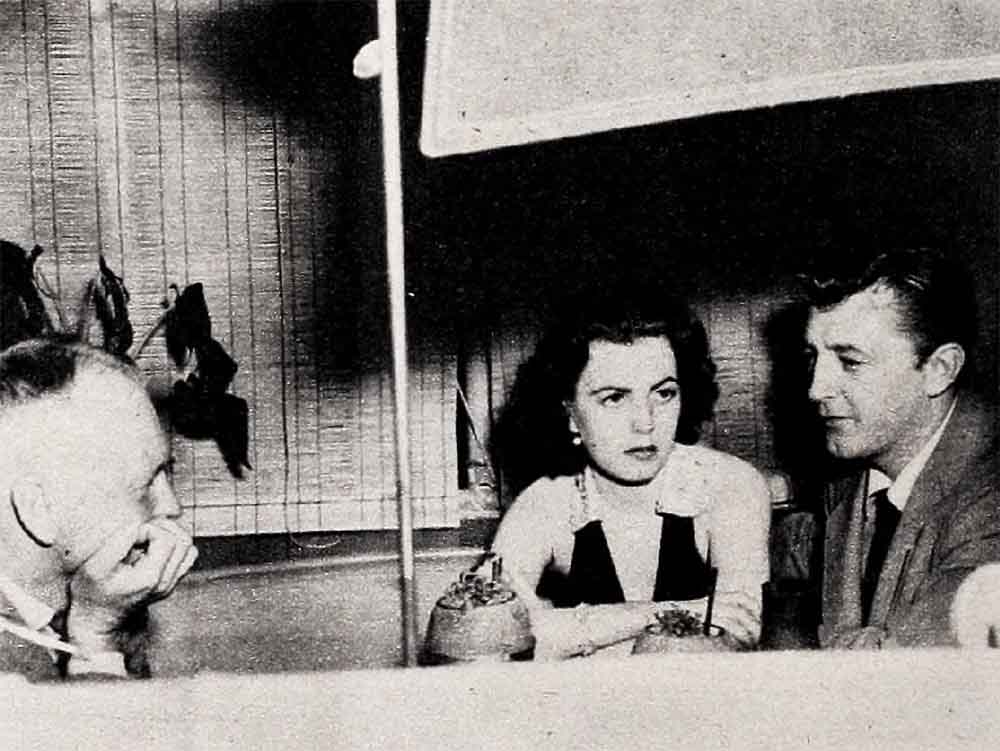
Howard Hughes, however, has a reputation for doing the unprecedented. After Jean Harlow had been turned down by every producer in Hollywood he personally directed her into renown in “Hell’s Angels.” He gambled on another unknown with Jane Russell, who today has evolved as a star of international proportions. Whether he visualized Faith’s photogenic possibilities as the provocative sultry screen type he has always preferred, or whether he was impressed by the warm spirit of the little friendly teenager who singled him out so sympathetically—who is to know?
Faith had come to California with her parents when she was six years old. In Beverly Hills, her father had continued in the automobile business and Faith had entered a Catholic grammar school.
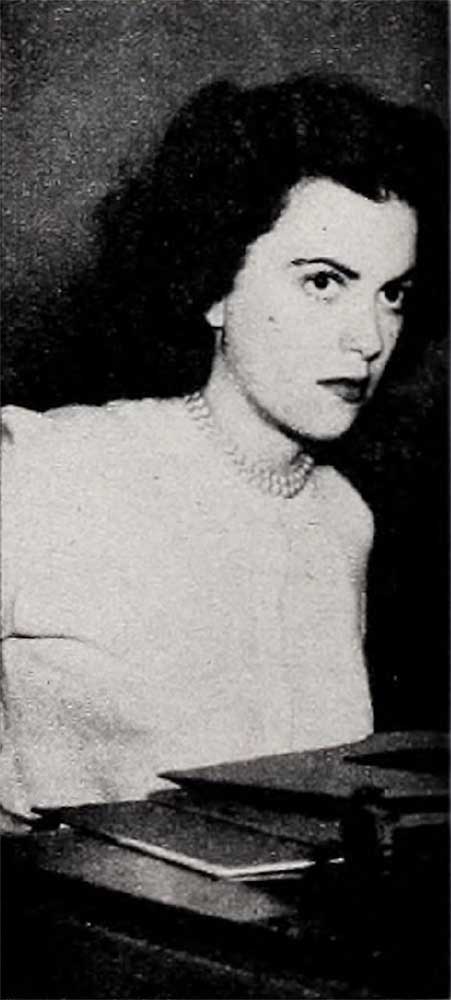
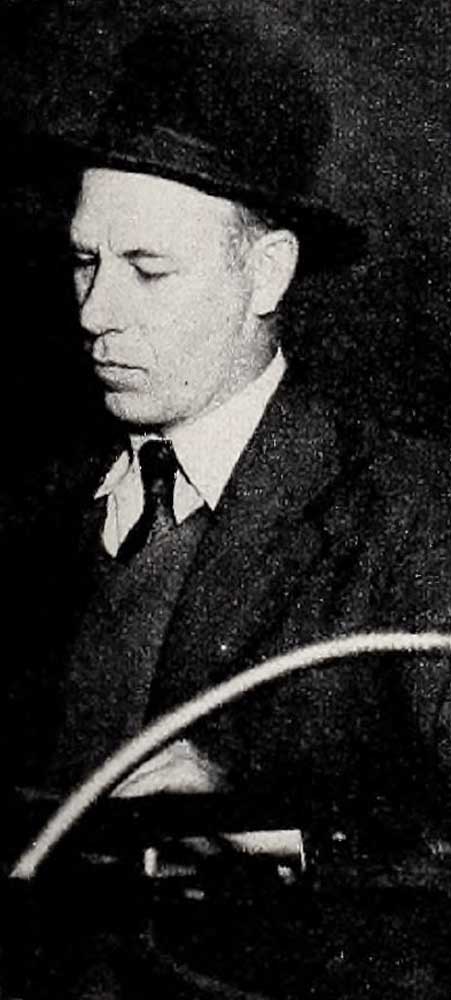
Her early years had been unhappy. Her playmates’ mimicry had kept her in tears, “so I would go home and play by myself,” she says. “I was always making up little plays—pretending.” Alone, she could even pretend to be the star of the school plays—“I was never the leading lady in those plays. I had to be a tree in the background. For when I read for a part I would get nervous and lisp still more.”
Faith was put into a special speech class in school. She studied poetry and learned to give a fine, if lisp-y, reading of Joyce Kilmer’s “Trees”—and of her favorite passage from “Invictus” which she still quotes today.
Out of the night that covers me
Black as the Pit from pole to pole
I thank whatever gods may be
For my unconquerable soul—
“I didn’t even know what it meant, but I loved it—” she says. She was to need that “unconquerable soul” more than she knew.
The horrible accident that threatened to disfigure her happened when a friend from St. Monica’s high school was driving her home—“He made a left turn off Wilshire—that’s all I remember,” she says. Another car hit them broadside and Faith was pitched through the windshield. “I came to in the hospital three days later. My face was bandaged and the back of my head was like a jig-saw puzzle! I asked no questions. I didn’t dare.”
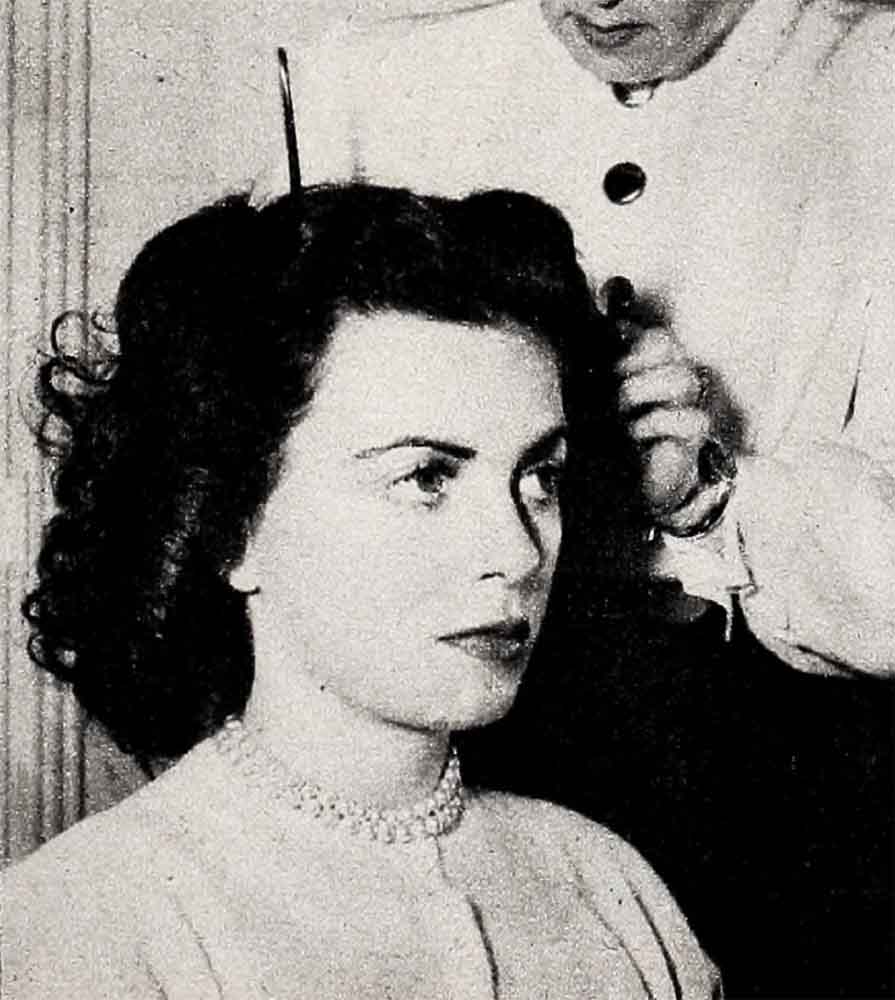
The day the bandages were taken off, Faith would allow no one in the room. “That was when I prayed as I had never prayed before.”
Some months later, at the insistence of a family friend who’d always thought she should be in the movies, Faith went to Warner Brothers studios. With her was the agent, Henry Willson, whom her friend had interested in her. She didn’t tell her parents. They hoped she would go to college. For she really didn’t expect anything to come of the venture. But after testing her, the studio offered her a seven-year contract, starting at $150 a week, and changed her name to Faith Dorn. “I must have photographed fairly well. They didn’t say anything about my voice—but when I heard it over the sound track I was terrified!”
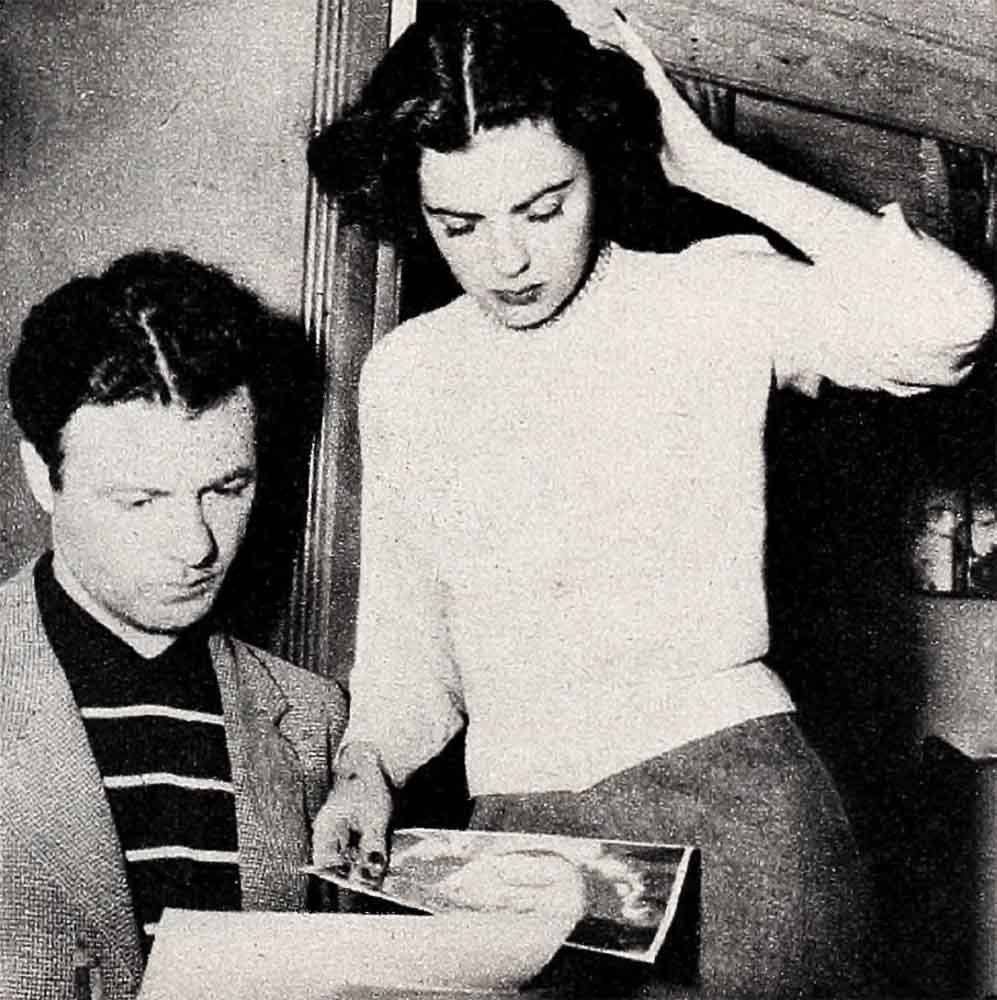
Then, Howard Hughes, back in Hollywood from Balboa, got her test from Warner Brothers, talked to her parents, and began negotiations that resulted not only in his taking over her contract, but in buying her away from her agent, too, so he could control her career completely. He called a now slightly awed Faith into his office. This time he did the talking. He told her he had no immediate plans to put her in pictures. “But,” he told her, “if you work very hard, if you’re patient, and if you have confidence in me—someday you will be one of the biggest stars in Hollywood.”
He changed her name back to Domergue “because it looks nice when it’s written,” he said. In her physical appearance he would allow no changes other than an improvement in her figure and a loss of weight which brought her to her present 120 pounds. He personally interviewed prospective coaches. And he engaged her tutor. Faith studied French, Italian, German, the history and appreciation of music, the history and appreciation of art; she took piano and voice lessons, diction, elocution and had two hours of ice skating daily. “I even had flying lessons,” she adds. “Mr. Hughes thought it would be a good idea if I learned to fly. But he gave up after I’d had twelve lessons—I couldn’t solo.”
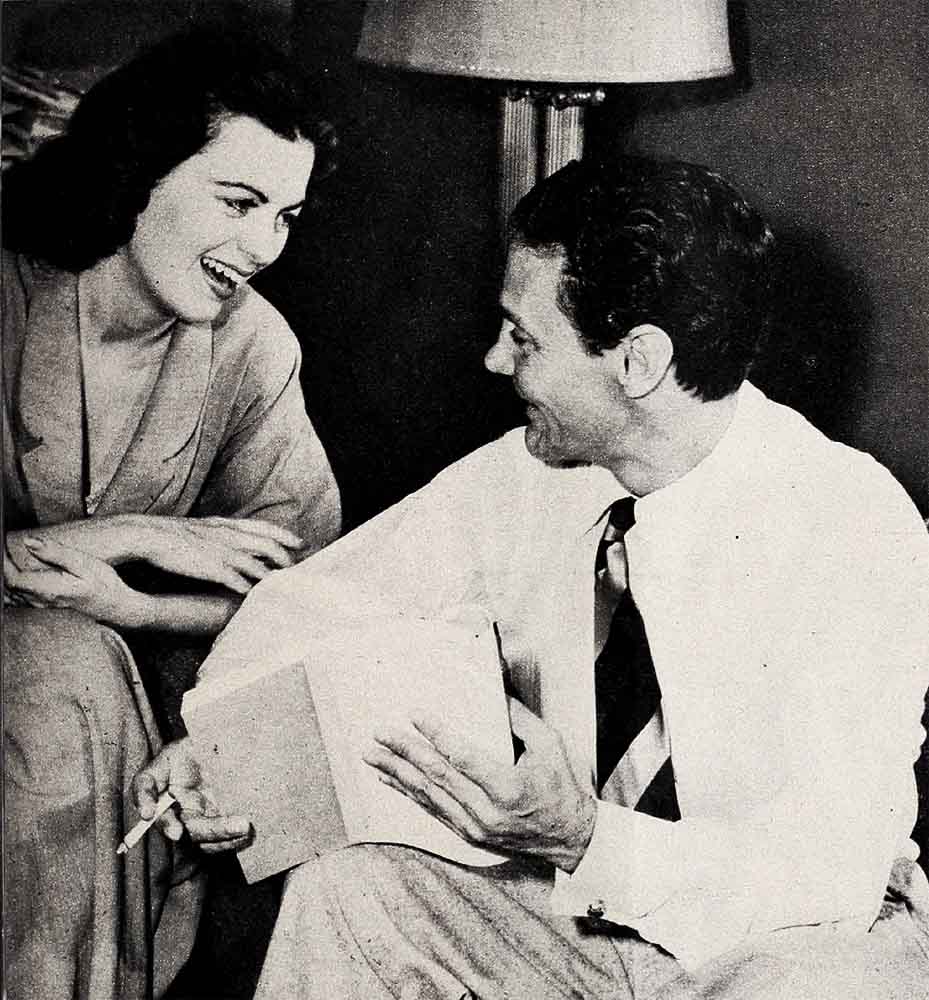
Faith’s “class-room” was Director Leo McCarey’s former office in the Hughes Productions building on Romaine Street in Hollywood—a fabulous Ziegfeldian setting with a magnificent oversized desk, assorted telephones, a record player, a radio, and even a bar—for which they could find no educational use. “You could have put on ‘Joan of Arc’ in there,” her diction coach then, Robert Paris, agrees, adding—“and Faith would be good in that too. She has a deep talent, a certain exciting dramatic quality the great actresses of all time have had—Ethel Barrymore, Bernhardt and Duse.”
To Robert Paris, who coached Rita Hayworth and Ina Claire, among many others,
Howard Hughes entrusted the painstaking job of correcting Faith’s speech impediment. The problem was to build up the muscles in her lower lip and tongue. For six months Paris prescribed using an ordinary tongue depressor. When held underneath the tongue this forced the tongue higher in the mouth, helped in the pronunciation of troublesome “S’s,” “Li’s,” “N’s,” “T’s,” “D’s,” and “Z’s.” Taking a deep-carpeted stance for two hours at a time Faith would hold the depresser under her tongue while she read scripts and poetry.
Later she learned to read with a cork held round-wise in her mouth to relax her jaw and build up her lower lip’s strength. After this there followed weeks when she read lines with a toothpick across her eyeteeth. If the muscles didn’t work correctly the toothpick broke. There were times when it did, But at last—it didn’t—and Faith’s lisp had disappeared.

Every morning at nine Faith reported for “school” and worked there until one o’clock. Ask her today if she didn’t weary of those five years of tutoring and waiting and she says, “No, I was always too busy. It was a great opportunity, and it was thrilling for me to find my lisp disappearing and my figure improving.” Howard Hughes never seemed to worry as to when results would be apparent. If not one day, then the next day—or the next year. “He feels you can overcome anything if you try hard enough.”
During these years Hughes guided Faith’s destiny completely via remote control, never appearing in the building during the hours she was there but telephoning her frequently to offer suggestions and ask how she was getting along.
“It was so strange,” she says now, “taking orders from someone you never saw. And when you get a compliment from Mr. Hughes,” she says, “it’s worth a hundred from anyone else.”
As, for instance, one day in 1946, when she had begun working on “Vendetta.” It was Christmas and she remembers so well when Hughes, who had never been on the set, called her and told her he thought she was doing very well. “I was elated for days!” she remembers. This was during the period of his own recuperation from plane crash injuries. But he had had Faith’s rushes run for him.
It was significant of Hughes’s personal confidence in Faith’s dramatic ability that he had approved the fiery role of the tragic heroine, Colomba from Prosper Merimee’s classic of the same name, a role which motivates the whole picture, as that in which to showcase his new star. The title of the picture was changed to “Vendetta” (revenge) and, ironically enough, there were times when the pixies seemed bent that way. It was four years in the making and there were four directors in the directing.
Finally in 1950 at RKO, Mel Ferrer, who gets the billing, completed the project. There were months in between each version, and Faith says, “I died four times—a different way for each director.” But she didn’t get discouraged. Again, she was sure Howard Hughes knew what was best for her.
During all these years Hughes paid Faith the salary her Warner studio contract had called for, with every option raise (in addition to providing all of her coaching and tutoring) until at the end of that first seven years Faith Domergue, still a complete unknown, was making $1,000 a week. “That’s what your Warner contract called for and after all, Warner Brothers might have been paying you this sum by now,” he told her.
During the making of “Vendetta” Faith eloped to San Diego with Ted Stauffer, an Acapulco, Mexico, hotel man. It was an impulsive marriage that lasted only two months. Six months after she separated from Stauffer she met that handsome South American director, Hugo Fregonese, at a party given for her good friend, Irene Wrightsman.
Fregonese, in Hollywood just three days, had come to the party with a mutual friend, Tony Moreno, with whom he was staying. “It was love at first sight—really,” says Faith. “I walked in and he saw me across the room—and I saw him. That was it. We started wending our way around the place towards each other.”
Tony Moreno introduced them and they left the party and went dancing at Ciro’s. “Hugo’s a wonderful tango dancer,” she sighs, reminiscing. They had a second date “a week later—then a day later—and a day later—and—” And so they were married, Oct. 7, 1947, by a magistrate in Juarez, Mexico, and again later by an Irish priest in Buenos Aires—“They have two marriages in Hugo’s country—and we wanted to make sure we were married right.”
For the first time Faith’s personal desires and her career conflicted. She completed retakes again on “Vendetta,” and her husband, who was unhappy with his work in Hollywood at the time, wanted to return to South America. Her seven-year contract was up. Hughes, now head of RKO studios, wanted her to re-sign with them. But she told him she could not. “Hugo is going to Buenos Aires—and I must go with him,” she said.
Hughes reasoned that Faith should be in Hollywood when her picture was released. “He thought it was unfair of me to leave at that time,” she says. “We parted very badly. This was the only argument we have ever had. But I had a hunch then—although I didn’t tell him—that I was going to have a baby. When I got to South America I knew.” She wired Hughes the news, “And then he understood and wasn’t angry any more.” He wired congratulations, and sent more of the same in the form of yellow roses when her daughter, Diana, was born Jan. 1, 1949.
Meanwhile, in Hollywood, when queried about “Vendetta,” Howard Hughes answered, “I’m waiting for the right moment to release it.” Perhaps Hughes was gambling even then upon Faith’s return.
When Faith’s baby was old enough to travel, Faith, who was homesick, and her husband, who wanted to become an American citizen, came back. Upon arrival, she immediately contacted her old employer and signed a new seven-year deal with RKO, with a clause incorporated that allows her to make one picture annually for her husband in Argentina, with the proviso that it will never be released in any English-speaking country, and her husband had the same clause inserted in his Universal-International contract.
They promptly bought a charming duplex in West Los Angeles and rented the lower half to her parents. “And we wouldn’t trade it for the most fabulous estate in Bel Air,” Faith says. “This way my mother can baby-sit, too—it’s wonderful.” Faith has settled down happily with her successful husband, their chubby blue-eyed daughter, Diana (“Dee-dee”), a Siamese cat called “Mish-Mish,” and a toy Shelton Shepherd dog, “Apache Warrior”—“I bought him in a Beverly Hills pet shop, because when I walked by he was there watching, with his nose against the window—”
Off screen Faith’s a devoted wife and mother, very placid and feminine, with a pronounced preference for long hair, earrings, fans, dainty handmade blouses, Chinese modern furniture, and a passion, for the color pink.
But before the cameras, she’s sultry and smoldering. Also, photogenically perfect. Which, according to RKO cameraman Nick Musuraca, with his twenty-year experience, “just isn’t supposed to be. Any good cameraman will tell you that. This girl hasn’t one bad angle.”
Although “Vendetta” finally was shot to Hughes’s satisfaction, he kept postponing its release and at last announced he would introduce his new star in “Where Danger Lives” in which she would be supported by established players like Bob Mitchum and Claude Rains.
If the cast or crew had any qualms about co-starring with an unknown who would play the exacting role of the mad murderess in this picture, they forgot them when Faith did her first dramatic hysterical scene—and all followed her, consoling and commending her, when she fled to her dressing room, still sobbing, after the cameras “cut.”
“ ‘Mitch’ was wonderful,” she says of Bob Mitchum now. He sent her flowers and he would clown and tease and make faces behind the camera while he sighed, “Ah, lucky Hugo—” and put her at ease.
And when the picture was completed Mitchum, together with Director John Farrow, gave her a gold chain link bracelet, inscribed, “From the other men in your life.” Of her talent, Farrow says, “She’s one of the finest young dramatic actresses Hollywood has known.”
Thus ends the first dramatic decade in the life of a girl who so faithfully followed a “skipper” into an exciting new world. But another story, that of Faith Domergue—Hollywood’s exciting new star—has just begun. . .
THE END
It is a quote. PHOTOPLAY MAGAZINE MARCH 1951




